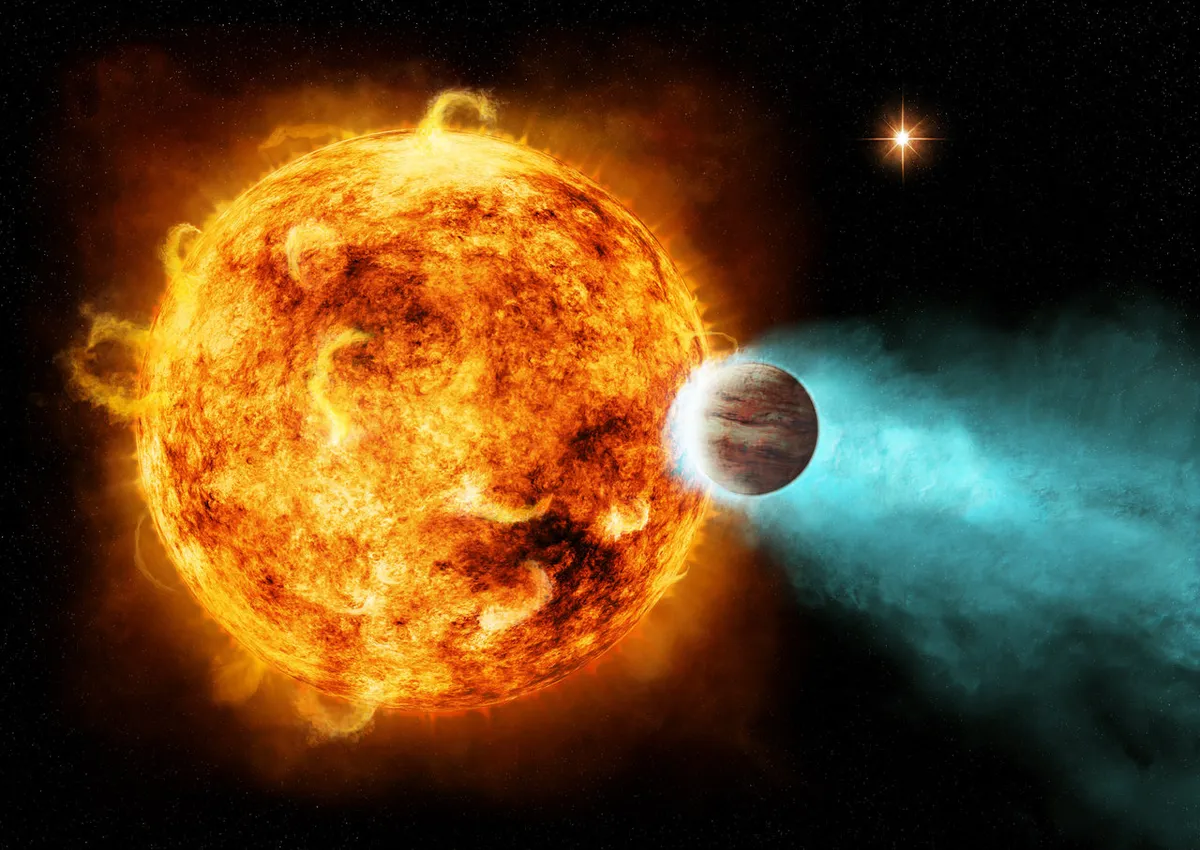Astronomers have now found 6,000 planets beyond our Solar System, NASA says, and that's only counting officially confirmed worlds.
The first exoplanets were discovered in the mid-1990s, and since that time, planet hunters have ramped up the search for and study of these distant worlds.
And what a plethora of strange worlds they've found, from planets with elongated orbits, to planets where it rains glass sideways and free floating 'rogue' planets wandering through space.

Counting 6,000 exoplanets
The number of confirmed exoplanets is monitored by NASA’s Exoplanet Science Institute (NExScI), at Caltech’s IPAC in Pasadena, California, USA.
Confirmed planets are added to the total count all the time by various missions led by different scientists around the world, so there is no '6,000th planet', NASA says.
But the number has potential to more than double. There are over 8,000 further exoplanet candidates awaiting official confirmation.
In fact, scientists now estimate that every star in the night sky has at least one planet orbiting it.
That means the chances for finding signs of life seem much more likely than they did in the early 1990s, before astronomers had confirmed even one single exoplanet.
"This milestone represents decades of cosmic exploration driven by NASA space telescopes, exploration that has completely changed the way humanity views the night sky," says Shawn Domagal-Goldman, acting director, Astrophysics Division, NASA Headquarters in Washington.
"Step by step, from discovery to characterisation, NASA missions have built the foundation to answering a fundamental question: Are we alone?
"Now, with our upcoming Nancy Grace Roman Space Telescope and Habitable Worlds Observatory, America will lead the next giant leap, studying worlds like our own around stars like our Sun."

Alien worlds tell us more about the Solar System
The first exoplanet discovered around a Sun-like star was confirmed in 1995.
As the toll now reaches 6,000 confirmed exoplanets, astronomers have built up a pretty hefty catalogue of different types of worlds, from small, rocky planets like Earth to enormous gas giants like Jupiter.
They've also found planets unlike anything we find in our own Solar System.
Hot Jupiters, for example, are Jupiter-like, massive gas giants that orbit close to their host star. Such a planet doesn't exist in our Solar System.
The most common type of exoplanets are so-called super Earths and mini Neptunes. Again, no such planet exists around our Sun.

Astronomers have also found planets that orbit two stars, planets orbiting no stars and planets orbiting dead stars.
As much as telling us about planets elsewhere in the Galaxy, the ever-growing catalogue of distant worlds tells us a lot about our own Solar System, and how like or unlike other systems it is.
"Each of the different types of planets we discover gives us information about the conditions under which planets can form and, ultimately, how common planets like Earth might be, and where we should be looking for them," says Dawn Gelino, head of NASA’s Exoplanet Exploration Program (ExEP), at the Jet Propulsion Laboratory in California.
"If we want to find out if we’re alone in the universe, all of this knowledge is essential."

Finding distant worlds
Stars are bright and planets are faint, so it's difficult to see or photograph exoplanets directly.
But despite this, astronomers have managed to capture real images showing planets orbiting distant stars.
However, the vast majority of exoplanets are discovered indirectly.
Common methods for detecting exoplanets include the transit method, where they look for regular dips in brightness of a star that might indicate an orbiting planet passing in front of it.
Or there's the 'radial velocity' method, where astronomers observe a star's tiny wobbles, which could be caused by the gravitational tug of a planet in orbit.
Such exoplanet candidates can then be confirmed by follow-up observations, often using an additional telescope.

"We really need the whole community working together if we want to maximise our investments in these missions that are churning out exoplanets candidates," says Aurora Kesseli, deputy science lead for the NASA Exoplanet Archive at IPAC.
"A big part of what we do at NExScI is build tools that help the community go out and turn candidate planets into confirmed planets."

NASA says it's now focussing on finding rocky, Earth-like planets and looking for biosignatures in their atmospheres.
These are tell-tale chemical signatures that could indicate biological processes occurring at these distant worlds.
In other words, signs of life.
As the number of confirmed exoplanets hits 6,000, but with 8,000 other worlds yet to be confirmed, and countless more waiting to be discovered, it feels like planet-hunting has indeed hit a major milestone, but that this is only the tip of the iceberg.

